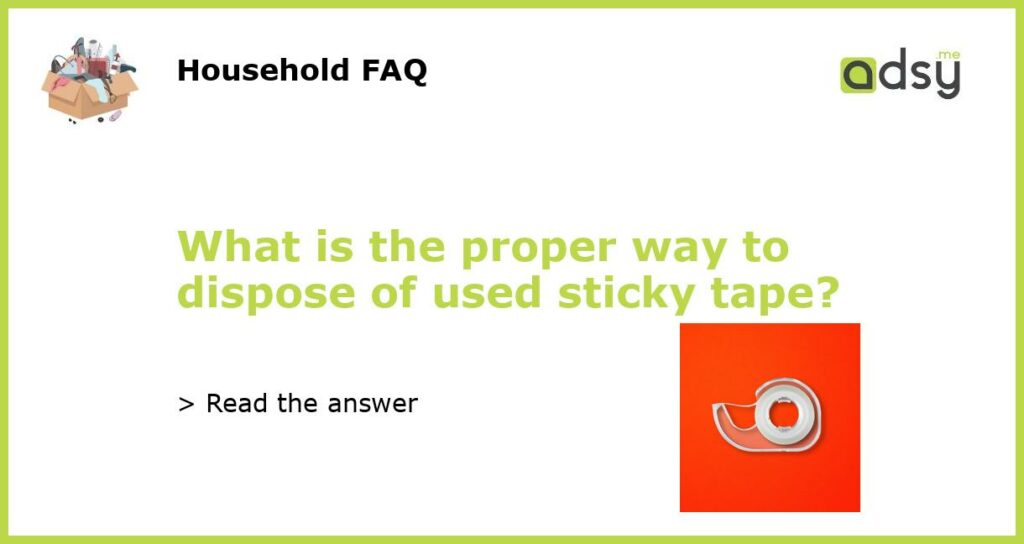Proper Disposal of Used Sticky Tape: Why It Matters
Used sticky tape is a common household item that often ends up in the trash without a second thought. However, proper disposal of sticky tape is important for several reasons. Not only can it have a negative impact on the environment, but it can also create problems in recycling facilities. In this article, we will explore why it is important to dispose of used sticky tape properly and provide you with some eco-friendly alternatives.
Why Proper Disposal Matters
The first step in understanding the proper way to dispose of used sticky tape is to consider why it matters. Sticky tape is typically made from plastic, which is not biodegradable. When sticky tape ends up in landfills, it can take hundreds of years to break down, contributing to environmental pollution. Additionally, sticky tape can cause problems in recycling facilities. The adhesives and residues left on the tape can contaminate other recyclable materials and reduce the effectiveness of the recycling process.
Eco-Friendly Options for Disposal
Now that we understand the importance of proper disposal, let’s explore some eco-friendly options for getting rid of used sticky tape:
- Reuse: One of the easiest ways to dispose of used sticky tape is to reuse it. If the tape is still in good condition, you can save it for future use. This is particularly useful for craft projects or wrapping gifts.
- Recycling: While sticky tape itself cannot be recycled, some recycling facilities accept the cardboard cores that hold the tape. Check with your local recycling center to see if they accept these cores for recycling.
- Composting: If the sticky tape is made from a biodegradable material, such as cellulose-based tape, it can be composted. However, be sure to remove any non-biodegradable components, such as plastic or metal, before adding it to your compost pile.
- Separation: If you are unable to reuse or compost the sticky tape, it is important to separate it from your regular trash. This prevents it from contaminating other recyclable materials. You can place the tape in a separate bag or container and dispose of it in the regular trash.
Alternatives to Sticky Tape
Another way to reduce the need for proper disposal of sticky tape is to explore alternative options:
- Biodegradable Tape: Look for biodegradable sticky tape made from materials like paper or cellulose. These tapes are designed to break down naturally over time and can be composted.
- Reusable Fasteners: Consider using reusable fasteners, such as Velcro or adhesive hooks, instead of sticky tape. These can be used multiple times and are less likely to end up in the trash.
- Cloth Tape: Cloth tape, also known as gaffer tape, is a strong adhesive tape that can be used as an alternative to traditional sticky tape. It can be easily removed without leaving residue behind, making it more environmentally friendly.
- String or Twine: For certain applications, such as gift wrapping, consider using string or twine instead of sticky tape. These natural materials can be composted or reused.
The Bottom Line
Proper disposal of used sticky tape is essential for protecting the environment and ensuring the effectiveness of recycling processes. By reusing sticky tape, recycling the cardboard cores, composting biodegradable tape, separating non-biodegradable tape, or exploring alternative options, we can all play our part in reducing waste and minimizing the negative impact on our planet.






